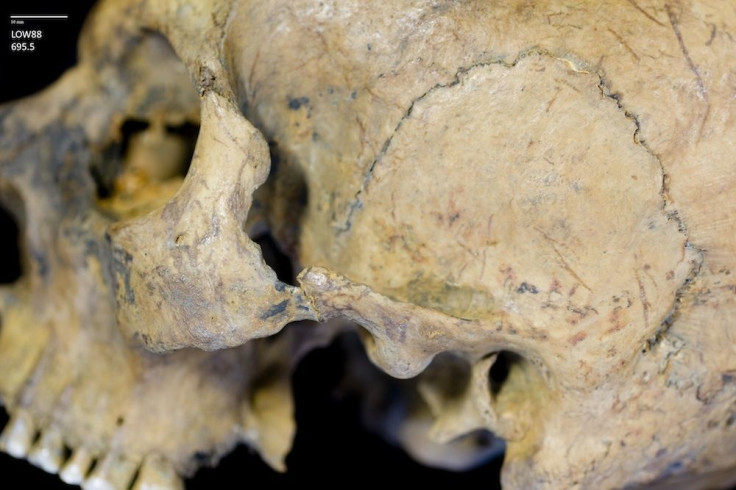The Week In Science: Gladiator Skulls, Heroin Overdose Antidote, Winter Olympics Science

This week in science, we learned about a magnetic internal compass that salmon use to navigate; responded to some creationist questions and arguments; and got a look at a wobbly little planet in the Cygnus constellation about 2,300 light-years away. But there’s still lots more science happening this week; here’s a roundup of what folks are talking about:
A trove of skulls unearthed in England might have belonged to gladiators from the Roman occupation of Britain. [LiveScience]
Being a firstborn son may put you in better standing to inherit your family's estate (at least for now), but it also increases a man’s risk for weight gain and diabetes. It might be due to something involving blood flow in the placenta -- a woman’s first pregnancy causes changes in uterine arteries, which will benefit later children from conception on, but the firstborn doesn’t get any of those possible benefits. [Los Angeles Times]
All those areas in the ocean we set aside for protecting fish? They aren’t working out as well as we hoped. [Ars Technica]
An in-depth look at Iran’s massive population explosion, and what it might teach us about coping with overpopulation worldwide. [Matter]
In the wake of Philip Seymour Hoffman’s death from an apparent heroin overdose, a growing chorus of voices is calling on state and federal officials to make an antidote to overdose widely available. Naloxone can be given via nasal spray or injection, and kicks heroin out of the receptors in the brain, rapidly reviving a person that’s lost consciousness and/or stopped breathing. A new bill in New York state would make it easier for drug users to obtain naloxone by allowing doctors and nurses to write prescriptions and train community-based drug treatment staff to administer it. Currently, programs must have a doctor present to give the antidote. [New York Times; Journal of the American Medical Association (JAMA)]
Why are there so many snowy owls in the U.S. right now? [Aeon Magazine]
New in “news to send you hypochondriatically searching WebMD”: what a man thought was a splinter underneath his nail actually turned out to be a tumor. Thankfully, the tumor was benign, but it turns out this sort of thing is a bit more common than people realize -- tumors of the nail are often mistaken for nail fungus. Some of them can be malignant, too. [LiveScience]
Want to see the Northern Lights, but can’t make it up to Alaska? There’s an app coming out that will show videos of the Northern Lights in real time. [Space.com]
The BBC has a whole series of videos on the science of the winter Olympics, from artificial snow to the technological advancements that help athletes shave those extra few thousandths of a second from their race times. [BBC]
People with synesthesia often have one sense wired in an interesting way to another sense -- like seeing concrete shapes in the mind in response to sounds, or attributing very specific colors to certain numbers or letters. A mild form of one particular kind of synesthesia -- an association between sounds and physical sensations -- may actually be more common than we think. [Nautilus]
© Copyright IBTimes 2024. All rights reserved.





















